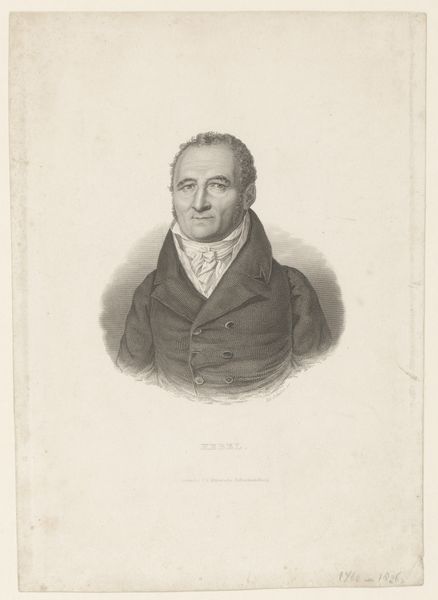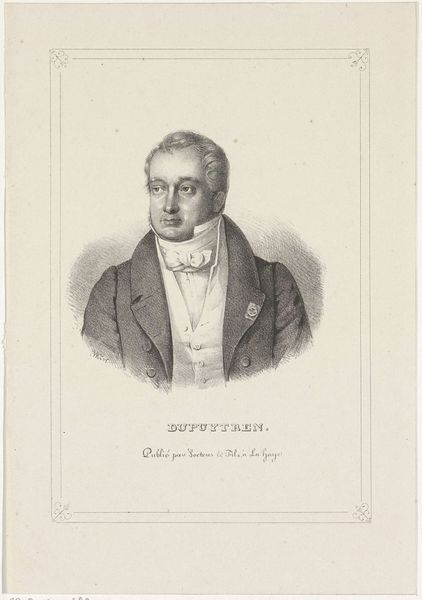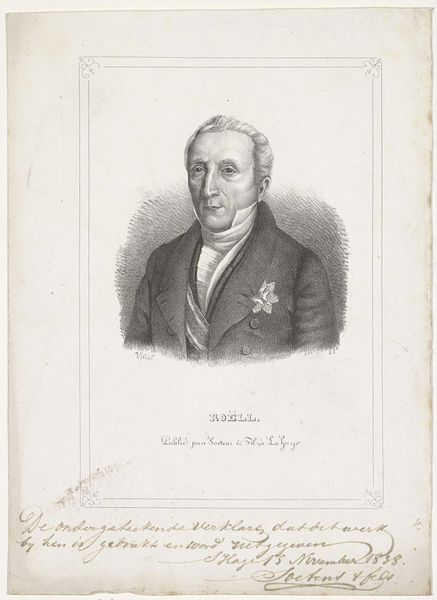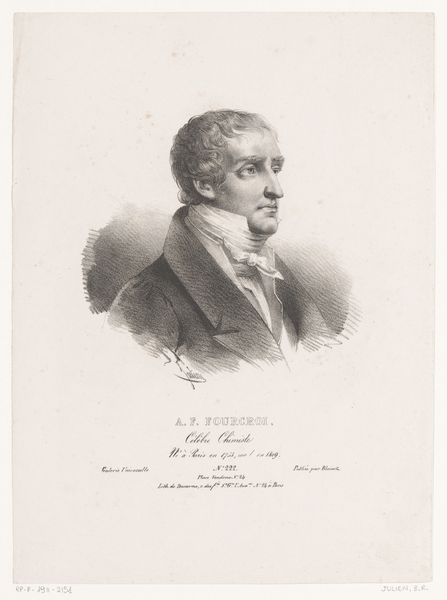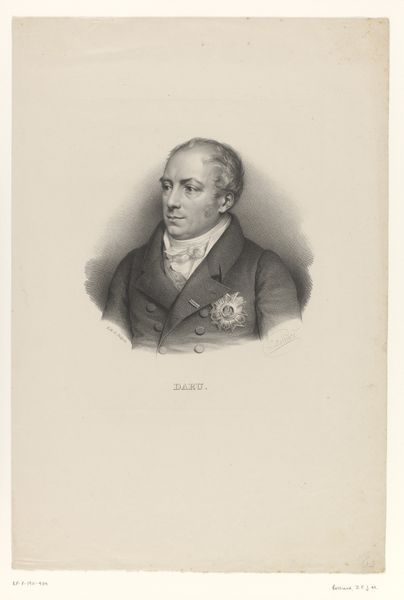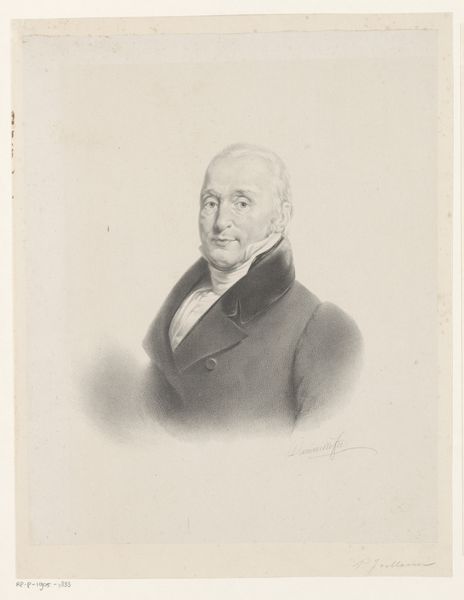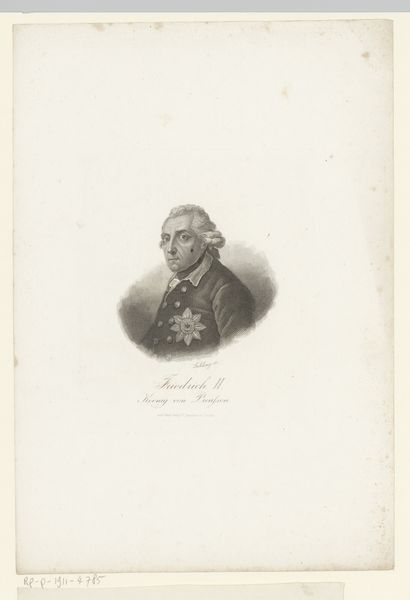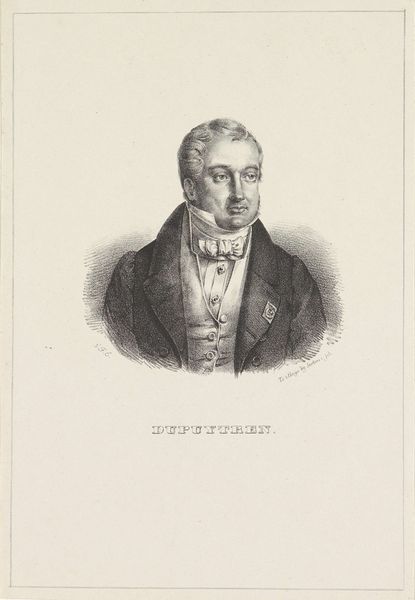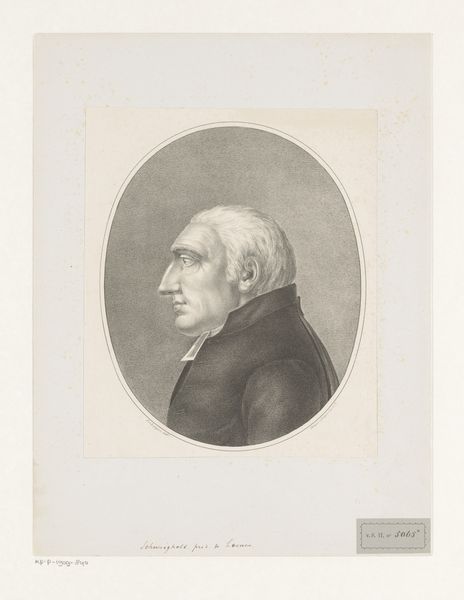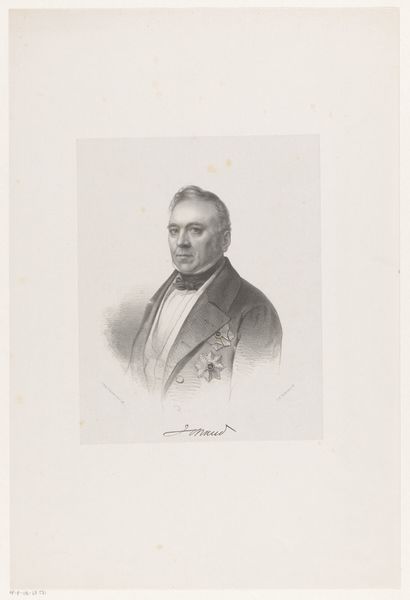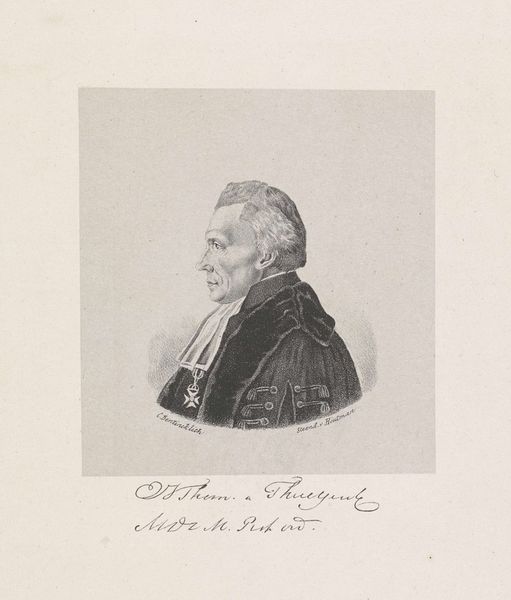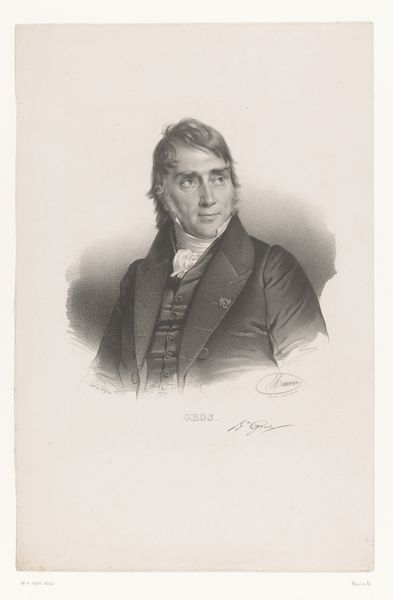
lithograph, print
#
portrait
#
lithograph
# print
#
romanticism
Dimensions: 340 mm (height) x 255 mm (width) (bladmaal)
Editor: So, this is a lithograph print from between 1801 and 1853, "Johan Cornelius Krieger," by Carl Henckel. It's currently at the SMK in Denmark. It feels like quite a formal portrait; what jumps out at you? Curator: I see a fascinating study in the representation of power and status in the early 19th century. Prints like this circulated widely. How do you think the format itself – the accessible print medium – shapes the image's message? Editor: That’s interesting. I hadn’t thought about the medium playing such a vital role. Is it that a print is easily reproducible and available to more people, rather than, say, a painted portrait hanging in a private home? Curator: Precisely. Consider the context: post-Enlightenment Europe. Images of prominent men like Krieger became tools in constructing a sense of national identity and solidifying social hierarchies. His decorations and tailored jacket signal a commitment to service and honor, made all the more impactful due to their accessibility. Who do you imagine was the target audience for these images? Editor: Perhaps the rising middle class, eager to emulate those in power, or at least to keep up with who they were? I suppose prints like this help solidify and promote the image of particular individuals and thus the ideals they represent. Curator: Indeed. And consider the role of institutions like the SMK in preserving and presenting these works today. It shapes how we, the public, engage with this image of Danish identity, decades and even centuries later. How does seeing it in a museum context influence your understanding now? Editor: I see your point; putting it in a museum gives it another layer of authority. I'm definitely thinking more deeply about how social forces and reproduction techniques influenced art! Curator: And hopefully, consider the artwork’s ability to reflect and shape cultural perception, not only then but also in the present.
Comments
No comments
Be the first to comment and join the conversation on the ultimate creative platform.
